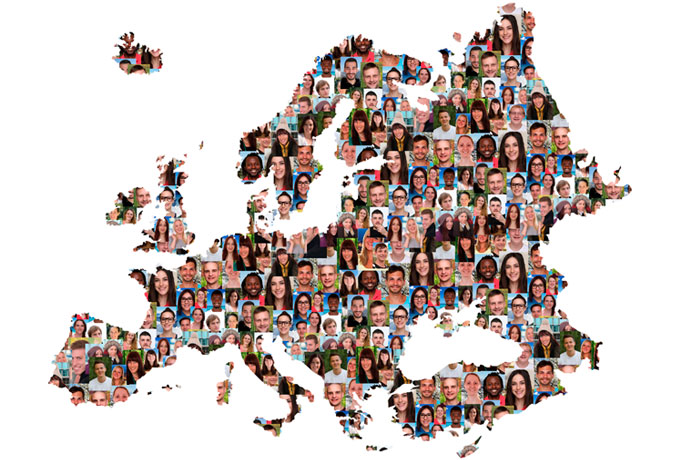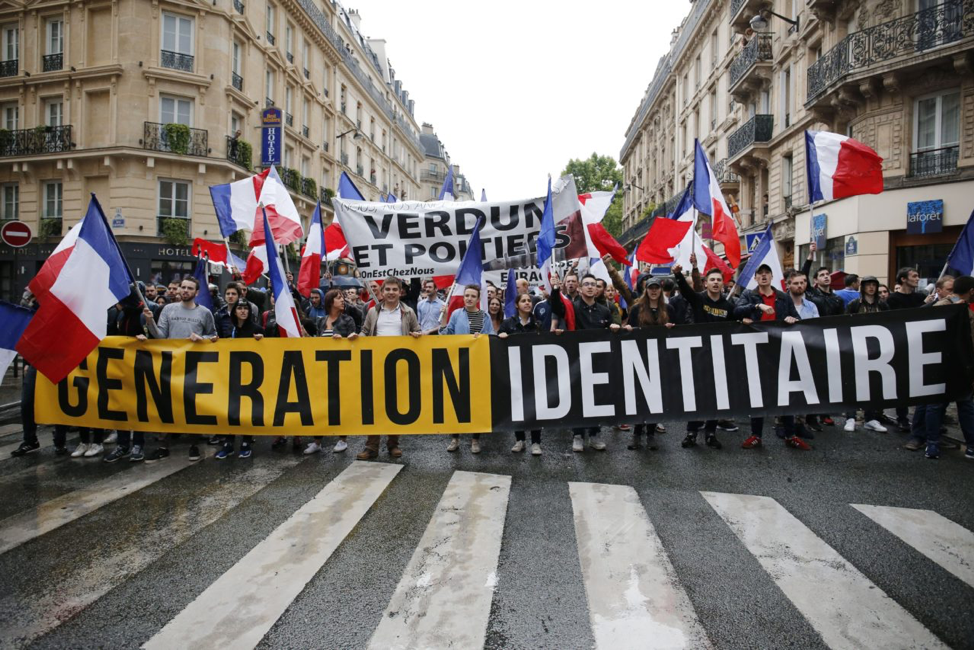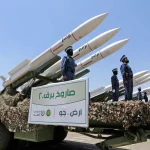The article deals with relations between on the one hand the supporters of pan-European identity, which has to take the place of the particular national ones, and on the other hand the proponents of maintaining specific national identities as the top priority within the European Union (the EU). Certainly, the European Union continues to expand its borders, individual national currencies are becoming unified into the common EU currency – Euro (€), and the political and economic climates are gravitating towards pan-continental unification. However, what does this unification process mean in terms of identity? The crucial question is: Will the success of the EU rest solely in economic and political interdependence or will a strong pan-European identity emerge in a fashion similar to what we see in the United States, Australia, France, New Zealand, etc.? This article will try to identify already existing views and models in regard to the creation of pan-European identity before addressing additional factors which have to be taken into consideration as well as.
Introduction
The EU is today a composition of 28 Member States across the European continent with a perspective to include more Member States from the East in the future within the common policy of the so-called Eastward Enlargement. Currently, the candidate states are Montenegro, Turkey, Serbia (without Kosovo), and Republic of North Macedonia (ex-the Former Yugoslav Republic of Macedonia). On May 7th, 2009 started the initiative given by Poland of closer relations and cooperation between the EU and several post-Soviet republics: Armenia, Georgia, Azerbaijan, Belarus, Ukraine, and Moldova. The initiative became a program of the Eastern Partnership with the final task to attract those countries to finally become the Member States of the EU. It is obvious that the EU has a great chance to become more than present-day 28 member states (or with Brexit 27), but the crucial question of the Eastward Enlargement’s policy still left unsolved: the question of internal coherence, stability, functionality and above all solidarity among all so different and historically antagonistic member states and their national and ethnolinguistic groups.[i]
Nevertheless, the EU eastward enlargement with the possible inclusion of Turkey and former Socialist states of ex-Yugoslavia and ex-USSR is for sure the biggest challenge to the EU’s institutional, political and financial construction from the very beginning of the present-day EU in 1951 (the European Coal and Steel Community). But moreover, it is “a major challenge for our understanding of the meaning of Europe as a geographical, social and cultural space. It is also a question of the identity of Europe as one shaped by social or systemic integration” [18]. In other words, if the EU’s political construction is intended to survive for a longer time we strongly believe that it would be necessary to construct common pan-European identity which would be accepted by a strong majority of the EU’s citizens. Otherwise, the EU will degrade itself to the integration level of the EFTA: just a customs union and common market for the goods, labor force, and capital.[ii]
 European identity is more diluted than the concept of identity normally suggests, but it is nevertheless a new reality that has normative significance. An important aspect of social and political change over the past 25 years has been the Europeanization of identities. This can be seen in at least two ways:
European identity is more diluted than the concept of identity normally suggests, but it is nevertheless a new reality that has normative significance. An important aspect of social and political change over the past 25 years has been the Europeanization of identities. This can be seen in at least two ways:
- There is the increasing importance of European identities in the sense of identities that involve some degree of reference or orientation to Europe.
- European identity can be seen, not as an identity that is outside or anti-national, but as an internal transformation of national identities.
In its most explicit form, Europeanization is conceptualized as the process of downloading the EU’s directives, regulations, and institutional structures to the domestic level. However, this conceptualization of Europeanization has been extended in the literature in terms of uploading to the EU, shared beliefs, informal and formal rules, discourse, identities and vertical and horizontal policy transfer. Further issues regarding conceptualizations of Europeanization relate to direct and indirect impacts, diversity and uniformity and fit and misfit. There are also problems concerning the differences and similarities between Europeanization and European integration and whether the former offers anything new to the study and analysis of the EU.
It is worth to be mentioned that a governance approach to Europeanization has a lot of reasons. Definitions of governance abound. However, common in most definitions of governance is the idea that there is wide participation of public, private and voluntary actors in the policy process. The core executive approach suggests that the heart of Government should be seen not merely as the important formal institutions (government departments, the Prime Minister’s Office, the Cabinet and related committees etc.), but also the networks that surround them.
Ethnic indifference and common pan-European identity
In my strong opinion, the best model of creation of common pan-European identity is the French example-model of ethnic indifference according to which, all citizens within the state’s borders belong to the political identity of state-nation. This model presupposes the use of only one official language in the public sphere. The French model of ethnic indifference can be described as a model in which all persons who hold the citizenship of a state (regardless on ethnic or national origin, etc.) form the people of the state. Basically this model of group identity is derived from the concept of a citizenship-nation which defines the nation as its people (inhabitants) plus their citizenship. Simplified model’s formula “state-nation-language” is implied in many states across the world including, for instance, France, the United States of America, Canada, Australia, Switzerland, New Zealand, and Belgium.
The French model of ethnic indifference is built on the following five basic principles:
- It uses a state-nation model emphasizing the importance of the state over the nation.
- It creates a civic society as opposed to an ethnic society favored by the German model of ethnic difference.
- It creates a nationally-linguistic homogeneous state.
- It integrates minorities into society.
- It leads to no ethnolinguistic minorities with a consequence to assimilate them.
However, at first glance, the French model of ethnic indifference seems an ideal way to establish a common pan-European identity. Nevertheless, when the model is deeply analyzed there are fundamental issues which must be ironed out. The fact is that the EU is a collaboration of (up to now) 28 historically unique parts. Thirteen of them are newly accepted members (in 2004, 2007 and 2013) from former Eastern Europe with a highly expressed ethnolinguistic nationalism for the sake to protect their particular ethnolinguistic identity.[iii] We have to remind ourselves that even one-party dictatorial regimes of the former Soviet Union or Yugoslavia could not succeed to introduce widely accepted supranational identity of “homo Sovieticus”, “homo Yugoslavicus” respectively, among their citizens.[iv]
Here the crucial points are that:
- It is impossible to “assimilate” the ethnolinguistic cultures in the case of the EU (or the United States of Europe – the USE), as the way of the full integration according to the French model of state-nation formation (after 1795) that is presented above.
- It is not necessary to do any kind of cultural assimilation.
In my belief, therefore, the successful common sense of solidarity can be based only on the common sense of a pan-European identity which has to be developed within the framework of a common EU’s citizenship. Additional problem is that the EU is in a unique world-wide situation as it is still multiethnic experiment and not truly unified as a “state” in the real meaning of the term although in many ways it plays the role of it.[v]
 The French model is, anyway, a great starting point, but modifications are necessary to make it applicable to the situation of the EU or in the future in the USE. However, contrary to the French model of ethnic indifference, the German model of ethnic difference or “Kulturnation” model based on the “language-nation-state” formula is in my opinion not practicable and applicable for the creation of common pan-European identity and a common solidarity based on it for the sake of better and stronger internal EU’s integration as it fosters ethnolinguistic differences, ethnonationalism and historical particularities.[vi]
The French model is, anyway, a great starting point, but modifications are necessary to make it applicable to the situation of the EU or in the future in the USE. However, contrary to the French model of ethnic indifference, the German model of ethnic difference or “Kulturnation” model based on the “language-nation-state” formula is in my opinion not practicable and applicable for the creation of common pan-European identity and a common solidarity based on it for the sake of better and stronger internal EU’s integration as it fosters ethnolinguistic differences, ethnonationalism and historical particularities.[vi]
Some of the research results of the public opinion in the EU say that “according to a poll conducted by the European Commission in all 25 member states last year, more than two-thirds of respondents say they feel ‘attached’ to Europe. Fifty-seven per cent see their identity as having a ‘European dimension’ in the near future, up to five percentage points from 1999, while 41 per cent say their identity remains entirely national.”[6]. As the EU’s citizens are feeling “attached” to Europe, the question is why did it happen?
The next part of the article will try to define the concepts of common pan-European identity in order to try to give an answer to this question.
The concepts of common pan-European identity
There are many discussions on the question of how to establish common pan-European identity. I think that the starting step in this process is firstly to investigate how the EU’s citizens feel the idea of common pan-European identity. In the next paragraph, it will be present some of the relevant research results on this issue.
According to the Herald Tribune, “most of the EU citizens who say they feel ‘European’ still rank their national identity higher than their European one, opinion polls show. But among those aged 21 to 35, almost a third says they feel more European than German, French or Italian, according to a survey by Time magazine in 2001”. Additionally, a survey conducted by Eurobarometer found that at the end of 2004 only 47% of EU citizens saw themselves as citizens of both their country and Europe, 41% as citizens of their country only. 86 % of the interviewees felt pride in their country, while 68% were proud of being European. In general, people feel more attached to their country (92%), region (88%), city (87%) than to Europe (67%) [16]. According to Eurobarometer’s research results in 2002, for all EU15 states a fear that European integration means loss of national identity was expressed by 43% of respondents. The highest per cent was in North Ireland (62) and the lowest in Belgium (31). However, it was clear that in each of those EU15 states there were at least 31% of respondents who did not believe into a common pan-European identity [57].
The question is what causes this lack of common pan-European identity despite the expansion of the EU and a falling of the borders between the Member States? First, assuming that common pan-European identity emerges from an exchange of intercultural relations follows what it refers to as the constructivist view of Europe as a space of encounters:
“as identities undergo constant change, ‘European identity’ would be encompassing multiple meanings and identifications and would be constantly redefined through relationships with others. ‘United in Diversity’ would mean the participation in collective political and cultural practices. It would be wrong and impossible to fix EU borders” [37].
The critics of this theoretical concept claim that it overestimates the ability to adapt, underestimates the need for stability and “too much diversity can eventually lead to the loss of identity, orientation and coherence, and therefore undermine democracy and established communities” [37]. Nevertheless, it is believed that any kind of successful and functional concept of common pan-European identity has to be developed within the framework of liberal democracy.[vii]
With a little period gone by since the EU more than doubled in size, adding 13 new members from 2004 to 2013, it is quite difficult to claim precisely what is the future of common pan-European identity. Without any ability to conduct empirical tests the effect of Europe as space of encounters can only be discussed theoretically leading to inconclusive results. Nevertheless, I think that there is a reason for optimism. Both the EU and Europe are rapidly changing, but the question is will this change constantly redefine the multiple meanings of European identity portrayed by the view of Europe as a space of encounters?[viii]
If the EU is not solely a Europe of space of encounters, then the question becomes how to define common pan-European identity? For the theory of the EU (the USE and Europe as a continent) as a space of encounters certainly has its fair share of critics allowing for alternative definitions to arise. One of the most prosperous starting points for establishing common pan-European identity is the common (unifying) culture and (positive) history throughout the Old continent.[ix] The so-called “communitarians” believe in the view (concept) of Europe of culture or European family of nations. This view is defined as:
“The European identity has emerged from common movements in religion and philosophy, politics, science and the arts. Therefore, they tend to exclude Turkey from the ranks of possible future member states and argue a stronger awareness of the Christian (or Judeo-Christian) tradition. ‘United in diversity’ is taken to refer to Europe as a ‘family of nations’. On this basis, it is high time to define EU borders” [16].
There are two most important problems of this concept: 1) it excludes the inclusion of minority populations within the EU[x]; and 2) it opposes Turkey’s EU membership.[xi] The fact is that such culture-nationalistic approach is usually the main source of conflict within the EU. Furthermore, defining common pan-European identity as Europe of culture will undoubtedly bring forth further tensions with the minority groups throughout the EU (or in the future the USE). For instance, in 2004, tensions flared in the Netherlands after filmmaker Theo van Gogh was brutally murdered by a citizen of Moroccan descent in response to van Gogh’s controversial film about the Islamic culture [17]. In response, the protestors took to the streets of Amsterdam banging pots and pans as an expression of freedom of speech. Several mosques were also burnt throughout the country by the Dutch extremists (or patriots?).
Further, in Germany, the gastarbeiter (“guest worker”) question is a highly contested issue during several last decades. The situation revolves around a large portion of people who are moving to Germany from the mid-1960s onwards in order to fill vacant positions and help the economy to grow. However, the original idea was that they would go back to their native countries after Germany had achieved her economic success. However, most gastarbeiters decided to stay and many had children who were born and raised in Germany.[xii] In general, it is essential for the European well-being to incorporate its national minorities; therefore, a view of common pan-European identity as a Europe of culture seems to be a radical and very dangerous definition, which could certainly backfire causing immense difficulties throughout the EU. In the other words, it is highly advisable to search for a definition that encompasses Europe as a whole without excluding the beliefs, customs, and history of both the national minorities (autochthonous or not) and the stateless nations in Europe.[xiii]
The third applicable concept can be Europe of citizens or Constitutional patriotism.[xiv] The main attributes of this concept are:
“[Establishing a] common political culture, or civic identity, based on universal principles of democracy, human rights, the rule of law etc. expressed in the framework of a common public sphere and political participation (or ‘constitutional patriotism’, a term coined by the German scholar Jürgen Habermas). They believe that cultural identities, religious beliefs etc. should be confined to the private sphere. For them, European identity will emerge from common political and civic practices, civil society organizations and strong EU institutions. ‘United in diversity’, according to this view, means that the citizens share the same political and civic values, while at the same time adhering to different cultural practices. The limits of the community should be a question of politics, not culture” [16].
Surely, this view calls for assimilation of local patriotism and identities which is now reserved for the regional and private spheres, but on the general level of the whole EU, only common pan-European patriotism and identity have to be on agenda. However, the critics of the concept of Europe of citizens or Constitutional patriotism state that this approach is too artificial in distinguishing the private and public, as well as subjective and universal spheres of life. These critics also claim that the national-cultural differences by this approach are ignored, but the feelings of solidarity can only occur from the cultural feelings of belonging together [25]. It means that the common solidarity feeling has to be established on the entire sum of particular national-cultural reciprocity sympathies. Otherwise, it will not function properly and for a longer period of time.
 However, now the practical question is: Can common citizenship solidarity replace in the real life of the EU’s citizens historically antagonistic cultures based on different confessional denominations (Roman Catholicism, Protestantism, Islam, Orthodoxy, and Judaism)? As an answer, a proposal from the EU’s Commission in Brussels came: it can if we will teach at the schools only positive historical experiences of the relations between the EU’s nations.[xv] In spite of this, such approach of building solidarity effects within the EU will surely be labelled by the historians as something like “genocide against the science” or the “politics of washing brains” so experienced in all kinds of totalitarian regimes. Finally, the view of Europe of citizens or Constitutional patriotism took a major setback in late May and early June 2005, when the French and Dutch electoral bodies voted a resounding “No” on a referendum to ratify the proposed EU’s Constitution. We have to remember that according to Article IV, section 447 of the proposed EU’s Constitution, the constitutional treaty is not valid unless all countries of the EU ratify it [9].
However, now the practical question is: Can common citizenship solidarity replace in the real life of the EU’s citizens historically antagonistic cultures based on different confessional denominations (Roman Catholicism, Protestantism, Islam, Orthodoxy, and Judaism)? As an answer, a proposal from the EU’s Commission in Brussels came: it can if we will teach at the schools only positive historical experiences of the relations between the EU’s nations.[xv] In spite of this, such approach of building solidarity effects within the EU will surely be labelled by the historians as something like “genocide against the science” or the “politics of washing brains” so experienced in all kinds of totalitarian regimes. Finally, the view of Europe of citizens or Constitutional patriotism took a major setback in late May and early June 2005, when the French and Dutch electoral bodies voted a resounding “No” on a referendum to ratify the proposed EU’s Constitution. We have to remember that according to Article IV, section 447 of the proposed EU’s Constitution, the constitutional treaty is not valid unless all countries of the EU ratify it [9].
The extreme portrayal of the concept of Europe of citizens or Constitutional patriotism is what is being labelled as the “United States of Europe”, a phrase firstly coined by Winston Churchill in his address in Zürich in 1946. This theory states that the nation-states of the EU would give into the state-nation concept of the EU thus losing their sovereignty in the process. The outcome would be a result similar to the fifty states in the United States of America. In this context, the Belgian PM Guy Verhofstadt proposed the idea to have a core of federal Europe within the EU, involving those states who wished to participate. According to his idea, five policy areas should be federalized: 1) European social-economic policy; 2) technology cooperation; 3) common justice and security policy; 4) common diplomacy; and 5) common European army.[xvi]
Whether to be a proponent of Europe of citizens, Europe of culture or Europe as space of encounters view, one similarity that all three concepts have to share has to be, in my opinion, a consensus on preconditions necessary for the emergence of common pan-European identity. These preconditions can be in the following spheres:
- Politics: the strengthening of democratic participation at all levels and more democracy at the EU’s level in particular.
- Education and culture: strengthening of the European dimension in certain subjects (especially history), more focus on language learning, more exchanges, etc.
- Social and economic cohesion: counteracting social and economic differences.
To be continued
Reposts are welcomed with the reference to ORIENTAL REVIEW.
[i] On the very important issue of who are the Europeans and how does this matter for politics, see in [24].
[ii] The European Free Trade Area (the EFTA) was established in the early 1960s as a competing organization to the European Economic Community led by the United Kingdom, which was less ambitious than the European Economic Community that is today the EU [56]. We have to remember that the 1992 Treaty on European Union (Maastricht Treaty) marked in practice a major step in the process of European integration within the framework of the EU. In committed most of the Member States to adopt a single currency, extent competences in a range of areas of the European Community, strengthened the real powers of the European Parliament, created a Committee of the Regions, and introduced the concept of European citizenship. The Maastricht Treaty created a three-pillar structure of the EU, consisting of the European Community’s pillar and the intergovernmental pillars of the Common Foreign and Security Policy and Justice and Home Affairs [58].
[iii] The issue of the connection between nationalism and identity in East Europe, and particularly at the Balkans, is more complex if we know that the „national churches frequently sustained and protected the national identity. In international conflicts, religious differences played an important role in defence mechanisms, especially of weaker nationalities, as in the cases of Catholicism in Ireland and in Prussian Poland“ [20].
[iv] For instance, according to the 1981-census in Yugoslavia, it was only 5,4% „Yugoslavs“ (1,219,000) out of 22,428,000 inhabitants of the country [3].
[v] On this problem, see in [1, 4, 22, 35]. By academic definition, “state is a political association that establishes sovereign jurisdiction within defined territorial borders, characterized by its monopoly of legitimate violence” [55].
[vi] The German model makes a clear difference between ethnic majority on one hand and ethnic minorities on the other. On the question of ethnicity and nationalism, see in [37].
[vii] On debates on the concept of liberal democracy, see in [11]. On the question of borders and identities, see in [46]. About democratic principles and the EU’s institutional framework, see in [59].
[viii] See, for instance, on multilingual encounters in Europe in [26].
[ix] On the problem of current challenges of writing European history, see in [30].
[x] On the question of forms of cultural pluralism, see in [53].
[xi] On the question of Turkey’s accession to the EU and the question of identity challenge, see in [2, 10, 33].
[xii] On gasterbaiter question in Germany, see in [7, 42].
[xiii] On Europe’s stateless nations, see in [32]. This unique atlas takes us on a panoramic tour of the stateless nations in Europe today. It maps their physical and linguistic characteristics, and graphically summarises their history, politics and present position. The Alsatians, Basques, Corsicans, Frisians, the Scots and the Welsh are all peoples who are not sovereign and are fighting for their cultural and political identity. This atlas depicts the marvellous mosaic that is Europe today and paints a picture of a future Europe of flourishing small nations.
[xiv] Among many concepts on the definition of the European identity, Jürgen Habermas’s understanding of the term through the concept of Constitutional patriotism is one of the most attractive. This concept was especially relevant during the drafting and discussing the possible implications of the EU’s Constitution in 2004. However, the “No” votes in referendums in France and the Netherlands in 2005 abolished for some time the possibility of a Constitution for the EU, thus changing the nature and the focus of discussions on common pan-European identity. However, the concept of Constitutional patriotism has still plenty to offer to contribute to those debates on common pan-European identity. On the post-constitutional debates, the possibility of the evolution of the concept, the new forms of interpretation of the term and its relevance to common pan-European identity, see in [19, 25].
[xv] It was told during the workshop conversation in Brussels [51].
[xvi] More about this issue, see in [49].














Very informative text, however for some reason no references to cited literature or documents mentioned in endnotes?
How does a writer address pan-euro identity without mentioning the following?
The Coudenhove-Kalergi plan – The genocide of the Peoples of Europe
European Prize for the Chancellor
1-13-11
The European Society Coudenhove-Kalerg has awarded Chancellor Angela Merkel the European Prize 2010. The prize is awarded every two years for exceptional contributions to the European unification process.
. . .
[Emphasis added]